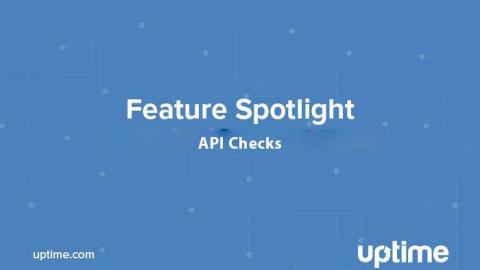Operations | Monitoring | ITSM | DevOps | Cloud
%term
SolarWinds Lab Episode #68: Show Your Systems Who's the Boss
Feature Spotlight: API Checks
API checks are as simple or complex as you need them to be, offering a great deal of functionality in checking the uptime of your own tools. Combined with a powerful programming interface like REST API, your checks can prove quite useful. These checks are multi-step, meaning you can ask it to do almost anything so long as you present those requests in a syntax your server understands. The key to an API check is formatting your requests properly.
Security Best Practices: Lessons Learned at a High-Growth Startup
Over the past few years, cybersecurity has become an integral part of operating an organization. Yet there are still plenty of small businesses that know very little about security or where to start. Most think they can get away without paying too much attention to security since they’re not a big target and they don’t have much that is worth stealing.
How we got a 100% Lighthouse performance score for our Vue.js app
Since launch, we didn’t pay too much attention to the front end performance of the main Checkly web app. Shame on us. What better reason to dive into this than the publishing of the excellent The Cost of Javascript in 2018 by Google’s Addy Osmani? TL;DR: it took about half a day to go from an abysmal 34 to a 100 Lighthouse score on our Vue.js app.
How Our Customers Influence the Sumo Logic Product
Sumo Logic is no different than most companies — we are in the service of our customers and we seek to build a product that they love. As we continue to refine the Sumo Logic platform, we’re also refining our feedback loops. One of those feedback loops is internal dogfooding and learning how our own internal teams such as engineering, sales engineering and customer success, experience the newest feature. However, we know that that approach can be biased.
Pages Per Second Counters
Continuing with last week’s article on Current and Average Disk Queue Length, this week we’ll discuss Pages Per Second and its related counters.
Posting to Product Hunt
Product Hunt is the place you'd want to announce your product on. It's a great place where potential early adopters are checking regularly to seek tools to ease tasks that need to be dealt with. In this post, I will share the PH experienced we had.
OnPage Blast IT - Mass Notification
Trust Sentry on NuGet: Package Prefix Reservation
As a pillar of the .NET ecosystem, NuGet specifies how .NET packages are created, hosted, and consumed, while also providing the necessary tools to achieve these functions. Despite being relatively new (launched in 2010), all project templates from Microsoft’s Visual Studio have included packages that required NuGet.org for several years.











